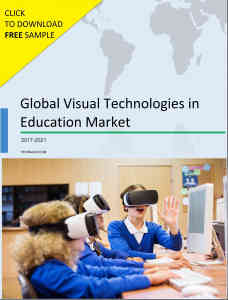Visualization has always been a dependable way to understand and learn things. No wonder, the enriching benefits of visualization in the spheres of teaching and learning has progressively pushed educational institutions to deploy pathbreaking technologies as ‘smart learning’ tools, and the same are offered by a surge of innovative tech brands. Herein, emerging technologies including augmented reality (AR), 3D printing, virtual reality and cloud computing are paving the way for the future of smart education in innovative and scalable ways.
 There is consistently something new on the horizon, and we cannot help but wait and wonder about the technological marvels that are coming up next. The way experts at Technavio see it; there are five major visual technologies in education which will completely transform the associated global industry.
There is consistently something new on the horizon, and we cannot help but wait and wonder about the technological marvels that are coming up next. The way experts at Technavio see it; there are five major visual technologies in education which will completely transform the associated global industry.
1) Augmented Reality: Creating student-centric learning environments
While we wait for AR to take the world by storm, innovations like Google Glass and Pokémon Go have already given away a sneak preview of how this technology will revolutionize an assortment of industries, importantly education in the near future. Bridging the gap between the physical and virtual worlds, AR will seamlessly transform the way we see, visualize and learn about the world around us. It will eventually enable teachers and students to visualize 3D models in real time, nestled in a real environment and projected to realistic scales.
2) 3D Printing: Taking learning to the next level
3D printing may currently sound like science fiction, but it is an exciting and innovative present-day technology with multiple creative and practical applications. A 3D printer works by printing objects, but it uses materials such as plastics, rubber, metal and the like, instead of ink. The 3D printing technology has the ability to emerge as an important addition in any ‘smart’ classroom. As part of the latter, students will not be restricted by the same old ways of perceiving objects and concepts, rather they can print a 3D model of almost anything to understand it better.
3) Cloud Computing: Increasing engagement and improving productivity
Cloud computing technology is booming these days and will most likely continue to revolutionize several aspects of our society, particularly education. The introduction of cloud in education will not only make learning easy and fun but also improve the technical skills of the students, thanks to online activities, and consequently make the students, staffs, and institutions future-ready. Fortunately, students can now get rid of the outdated learning materials and say no to expensive hardware and software while still staying on top of their educational endeavors.
4) Flexible Display: Education’s next frontier
What was once reserved for whiteboards and chalkboards, the classroom wall space, is now increasingly getting occupied by digital screens. From visual and aural to logical and tactile, the smart screens are catering to a wide range of learning styles and delivering the interactive educational experience. Flexible and foldable displays, built with active-matrix organic light-emitting diode (AMOLED) technology, are on the near horizon and are sure to offer students with yet more portable computing alternatives to today’s smartphones and tablets.
5) Game-Based Learning: Delivering interactive learning experience
At a time when the entire world is connected by the internet, students seem to have very short attention spans. It is no surprise that kids today swear by Facebook, YouTube, and smartphones that provide on-the-go, 24 hours updates while finding answers to all their queries through Wikipedia and Google. To cater to such a fast-moving generation, educational institutions will eventually have to abandon the traditional modes of teaching. One way to achieve this objective is employing a technique that is usually considered a major distraction to learning- gamification.



